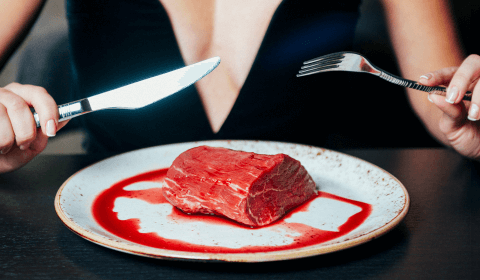Women’s football is not just changing the commercial landscape of sport. It’s redefining what football looks and feels like, from the pitch to the culture that surrounds it.
For over a century, football has been dominated by the aesthetics of aggression: chest-pounding celebrations, tunnel brawls, and tabloid-fuelled egos.
This cultural mythology – historically shaped by the men’s game – has leaned heavily on narratives of dominance, tribalism, and stoicism. But the rise of women’s football is offering a different vision that shifts the sport’s values altogether.
Gem Fletcher recently explored the changing landscape of women’s football in a brilliant piece of It’s Nice That, in which she tracks the longstanding dismissal of the sport within the cultural zeitgeist.
Recalling the 2015 women’s World Cup, Fletcher reminds us that the US team were met with disinterest following their win, ‘in fact, no one outside of die-hard fans cared.’
Photographer Cait Opperman subsequently embarked on a documentary series following the lives of NWSL players, uncovering the intimacy, community, and complex culture embroiled within women’s football.
‘These women were challenged in every way: physically, emotionally, economically,’ Opperman tells Fletcher.
‘For most players, the salary for an entire season didn’t even cover the cost of child care or rent, forcing many to take on secondary jobs to make ends meet. Culture-wise, there wasn’t one.’
Fortunately since then, the women’s game has exploded in the public consciousness and become a commercial behemoth in its own right.
Euro 2022 was a watershed moment in which attendance records were shattered, viewership figures soared, and a new generation of fans emerged – many of whom had never seen themselves reflected in football culture before. National fever continued to prosper throughout the Lionesses’ historic defence of the trophy last weekend too.
The women’s game now represents one of the fastest-growing segments in global sport, attracting unprecedented commercial attention from brands, broadcasters, and rights holders alike. UEFA projects that women’s football will generate €686 million annually by 2033.
But what’s interesting about this growth, as Fletcher astutely explores, is that its shifted expectations beyond gender parity with the men’s game, and forced a reimagining of sports culture as a whole. At least in the way we visually perceive it.
This commercial momentum has created space for new kinds of representation. Creative agencies and brands are not just sponsoring matches, they’re reshaping how football is seen. Campaigns for Adidas, Nike, and even indie publications now depict the game through visual codes that foreground softness, joy, friendship, and empowerment.
This cultural reframing is not accidental. It’s the product of both historical exclusion and intentional redirection. For much of the 20th century, women were banned or disincentivised from participating in organised football. In England, the FA’s 1921 ban on women’s matches (just five years after a women’s game drew a crowd of 53,000) stunted the sport’s growth for decades.
In many ways, the current boom is a form of cultural recovery. But with it comes a refusal to simply replicate the values of the men’s game. Instead, women’s football is becoming a platform to imagine sport differently.
This shift is particularly visible in the way players are portrayed and portray themselves. Campaigns around the sport capture players laughing together, faces pressed in a group hug, bathed in light. It feels less like a team promo than a celebration of collective strength.
Athletes themselves are branching out creatively beyond the pitch. Ella Toone, England Lioness and Manchester United midfielder, announced she her new creative agency last month. The business will focus on supporting Women’s Super League players with everything from management to brand sponsorship.
‘There’s a really big gap in the market. Women’s football is growing and growing, and more brands can be involved in that,’ Toone told Marketing Week.
Critically, this isn’t to suggest that women’s football lacks competitiveness or athleticism. The players are world-class, the pace is fast, and the stakes are high. But the culture around the game places different things at the centre.
One of sport’s greatest strengths lies in its capacity to build trust, transparency, and social cohesion, both within teams and with fans. And while we see this narrative rolled out following major wins, it often skews the other way in the event of a loss.
We’ve also seen players carve out new ventures in the form of grassroots organisations and alternative kits, as well as unexpected brand partnerships with small creative brands like Lucy Bronze and fashion atelier Aligne.
The result is a visual revolution that’s seeping into all aspects of the sport, and raising important questions around who football is for. The crowds look different, with more gender-diversity and multigenerational representation.


















